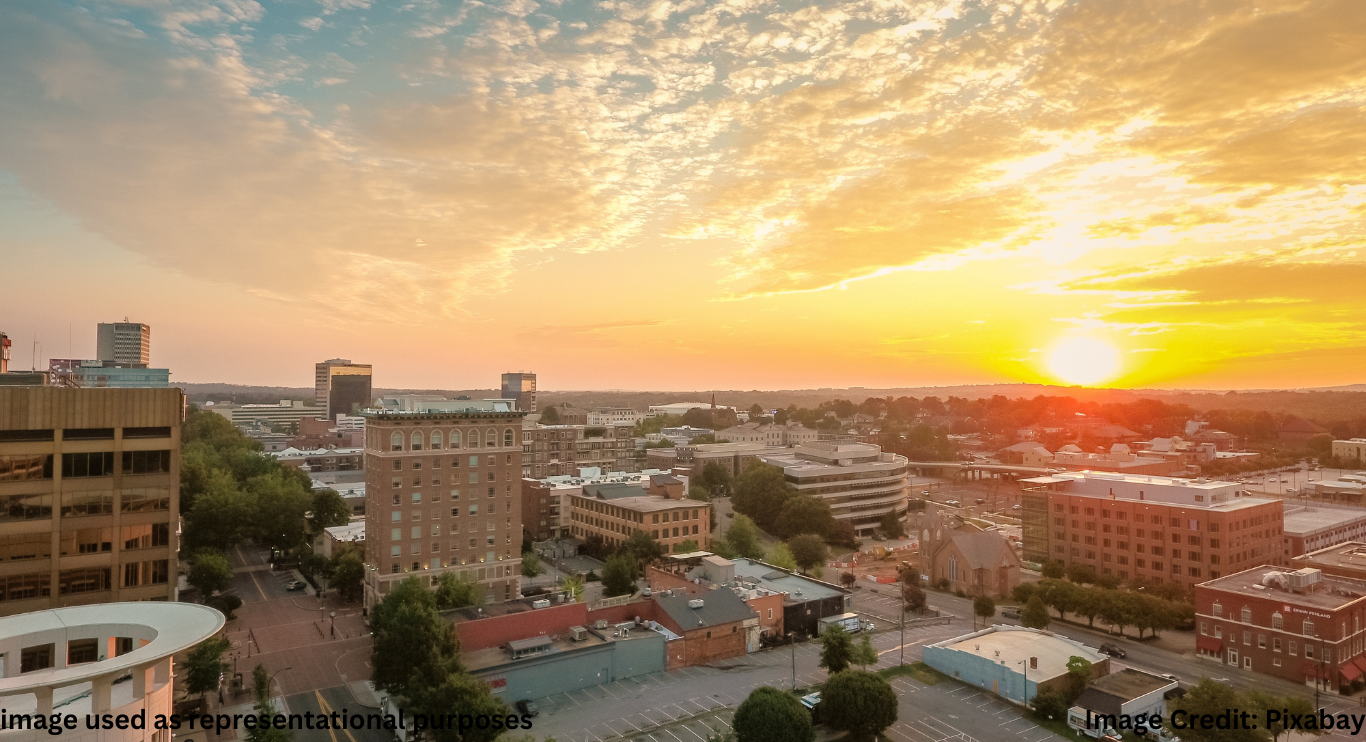
A Tragedy That Shook a Town
The community mourning for young flood victim in Alabama is a poignant reminder of how nature’s wrath can change lives in an instant. In a small Alabama town where everyone knows each other by name, the sudden death of a 9-year-old girl during last week’s flash flooding has left neighbors heartbroken, yet deeply united.
The child’s name was Amari Blake—a bright, spirited fourth-grader who loved painting rainbows and riding her bike. On July 6th, heavy rains overwhelmed drainage systems, turning quiet streets into torrents that swept her away before help could reach.
Who Was the Young Victim?
Amari was more than just another victim of a climate-induced disaster. She was the daughter of local librarian Tasha Blake and stepdaughter of firefighter Jeremy Carter, both known figures in the community. Her death wasn’t just a headline—it was a wound that cut through the heart of every parent and child in the area.
“She was sunshine,” said her teacher Mrs. Patterson. “When she entered a room, it lit up.”
Unseasonably intense rains pounded northern Alabama for over 12 hours. The National Weather Service issued warnings, but no one expected flash floods to reach children’s bedrooms or wash away playgrounds.
According to The Weather Channel, July 2025 has seen 22% more rainfall in the Southeastern U.S. compared to previous years, with Alabama recording its highest flood level in a decade
“I grabbed my daughter and ran,” recalled neighbor Tanya Douglas. “But Amari’s home got hit first. It was all too fast.”
Local authorities are still investigating the city’s stormwater management systems. The Alabama Emergency Management Agency confirmed that flood sensors were offline during the surge.
A Town in Mourning
Candlelight vigils. A mural outside the town library. Notes tied to the tree in Amari’s front yard. The community mourning for young flood victim in Alabama has grown into something more—a collective therapy for a broken town.
Churches, schools, and local stores all set up memorials. A GoFundMe set up for the family crossed $75,000 in donations in just 48 hours.
“We grieve differently, but this loss brought everyone together,” said Pastor Jerome of First Baptist Church.
Personal Stories and Local Heroes
Amari’s stepfather, Jeremy Carter, tried to reach her during the flood. “I was too late,” he said in a tearful interview. Despite his own grief, Jeremy helped evacuate five other children trapped on Madison Street.
Local teen Aaron Willis, 16, who usually mows lawns to earn money for college, pulled three children out of a submerged SUV and later said: “I just did what had to be done.”
These unsung heroes are part of a larger, untold story: of neighbors saving neighbors when time is short, and odds are steep.
A Call for Preparedness and Climate Awareness
This tragedy raises important questions: Could Amari’s death have been prevented? Are small towns equipped for climate extremes?
Climate Central reported that urban flooding will increase 45% in the next 30 years. As storms grow stronger, aging infrastructure in towns like this one becomes a silent killer.
This loss has sparked activism. Parents are petitioning for improved flood alert systems and updated school safety drills.
“We need more than prayers now. We need planning,” said high school science teacher Kelvin Moore.
Healing Through Action and Unity
In times of pain, healing often begins with action. Tasha Blake has launched the Amari Foundation for Flood Safety, focusing on child education in climate preparedness. The foundation aims to deliver flood kits and teach kids survival basics.
Local artist Juanita Harris is painting a memorial mural near the riverwalk—depicting Amari’s smile against a backdrop of storm clouds parting to reveal a rainbow.
Meanwhile, First Baptist Church has started a monthly “Flood Forum,” where residents can voice concerns and share coping strategies.
Conclusion: From Mourning to Memory
The community mourning for young flood victim in Alabama teaches us about the fragility of life—and the enduring strength of compassion. While Amari’s story began with tragedy, her memory now moves a community to grow, prepare, and unite.
In honoring her life, the town finds a reason to keep fighting—for better policies, stronger infrastructure, and the lives of the next generation.
“She mattered,” her mother whispered at the vigil. And through this community’s response, she still does.

Akalumhe Jefferson is a content writer with a new found interest for crafting engaging stories that transport readers to new worlds. Although no current actual background in creative writing but there’s active love for writing



